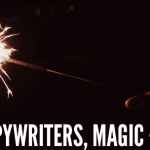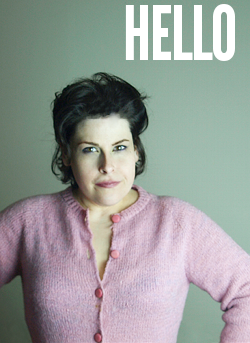How I became a copywriter: An adventure in learning and unlearning
By Jessica Albon
I wasn’t born a writer. In fact, when I was 9, I wrote in my diary:
“I’m not realy a big writing fan.”

From my diary, November 1987.
And, if I remember correctly, that was an understatement. I hated writing.
Yet, by the time I graduated college, I’d been working as both a professional magazine writer and copywriter for several years. I had prestigious writing credits to my name including writing awards and bylines.
So, what changed? How did I become a copywriter?
It’s a question I get asked lot. People ask how I learned my craft, who I learned from, what programs I recommend. And, truthfully, though I wouldn’t change a second about the way I learned, I did it the hard way.
The really, really hard way.
Last year, I talked about my copywriting training a bit and I talked about why so much of the training I received really isn’t relevant to the work that I do in professional website design and copywriting. The way that so much of what I learned is about fear and stoking that fear in the reader, and the way that’s so unnecessary.
In other words, as I trained to be a copywriter, I learned a lot. And as I became an actual copywriter, I unlearned even more.
Which makes sense, I think. Because so much of communicating is about what’s left unsaid, what’s heard between the lines.
And copywriting is no different.
So I studied copywriting with some of the best known of the field (including Michael Masterson, Bob Bly, and Dan Kennedy). And I spent a lot of time unlearning what they taught me.
What’s more, when it came time to write my own copy–write copy to sell the things that I was creating and offering in my business–I found the tools and techniques I’d been taught were an utter flop. They fizzled. Failed. Fast.
In my experience, it’s hard to write about what I have to offer. Because I vacillate between thinking, “This is the most amazing thing ever,” and reminding myself of all its microscopic flaws. (Usually, those are things like where the video got a little dark because the clouds shifted, or the audio skipped a second or two–things no one would notice but me.)
You probably do this too. This, “I know this will make a difference for people,” and yet, “I see all the ways it’s not completely perfect” seesaw.
There’s no seesaw when I’m writing copy for a client. I don’t have those doubts or reservations. I don’t judge their product as harshly as my own because I’m able to experience it differently–I’m able to see whether or not it helps without obsessing over the gap between what it is and perfection.
The training they give professional copywriters doesn’t address this gap. It doesn’t address what to do when you know what you have to offer is great… and still have doubts that sneak in in the middle of the night and taunt you.
That’s because it’s not a problem professional copywriters face when writing for their clients. It’s just a problem you and I face when writing for ourselves.
And it’s this piece–how to write copy for myself–that was so hard won. This was the piece that required what felt like endless stripping away of technique and tool and mask. Until, that is, I got to the very core of how I write a sales letter about something of my own.
I was issuing a call.
No more, no less.
I was showing up and saying, “Hey, this is what this is. See the vision of how it can make a difference in your life? Do you want that?”
And the reader was either answering the call or not. That’s all. Not committing to say yes to everything I ever do from this moment forward. Not committing to saying no to everything I ever create into perpetuity.
Here. Now. Yes. No.
Such a small thing.
And yet it’s where everything begins. With that yes or no. It’s the jumping off point for everything that comes after.
If it’s such a small thing, though, why does it feel so insurmountable? Why do people complain about how impossible it is to write their own copy? Why do they struggle so to explain what they have on offer?
Because no one’s showing you the easy way. The truth is, it’s easier to write copy for yourself than for a client. Or, at least, it can be.
And yet, when you use the resources that are out there–the courses and ebooks and websites and blogs–they’re teaching professional copywriters how to get better. Which means they’re teaching you an approach that fundamentally can’t work for you. This is why it feels so incredibly hard to write your own copy when using these resources. This is why you may have caught yourself thinking or saying, “It’s so much easier to write copy for other people!” Because, when you use the resources written for professional copywriters, of course that’s the result you get. In order to write great copy for yourself, you’ll have to unlearn everything you’ve been learning before you can even begin.
That’s why I created Sales Page Play Dates. Because writing your own copy can be easy and fun! But it can’t be done the way you’d do it if you were a professional copywriter. They’re two very different things, writing copy for clients and writing copy for yourself. And there are some very specific reasons for that.
I broke down everything I’ve learned about writing effective, powerful copy for myself and put it into a format designed to help you rapidly unlearn everything you’ve learned (that’s not working) about writing copy. (Hence the Play Date format–because our brains learn and unlearn more rapidly through play, even when we’re adults who are Very Serious About Copywriting.)
Each week, you’ll receive a video and a workbook to take you through that week’s Play Date. You’ll do everything from playing dress up to hosting a tea party. You’ll have fun. And in the end you’ll learn to write an effective, compelling sales page for your own offering.
I learned to do this the hard way. I’d love to show you how to write a sales letter the easy way.
Blog






